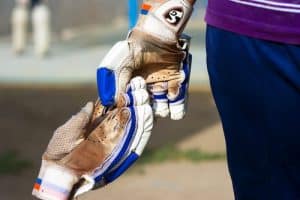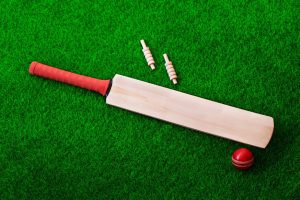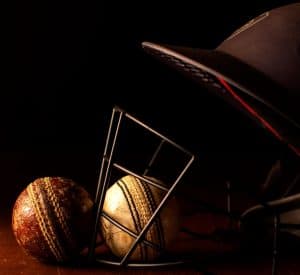With the range of cricket bats available, it can be confusing to choose the right one for you. Obviously critical to the game, you need to select a cricket bat that you are comfortable with and feel happy batting with. It’s deeply personal with professional players, where the sensation of the bat in their hands is a powerful thing. Bigger is not necessarily better but increasingly, professional players’ have a preference for a larger bow and thicker edges as this better suits the rigors of the modern game. This is also being reflected in cricket bats for sale to the general public.
Points to Consider Before Purchase
-
Your budget
Be realistic about how much you’re prepared to spend on your bat. Meulemans offer high quality cricket bats for unbeatable prices, starting from around AUD$ 250 for junior replica ranges. Gray Nicolls and Kookaburra cricket bats vary from around AUD$ 200 right up to AUD $ 1,450 for the exclusive Legend Gold Gray Nicolls cricket bat. Bear in mind that that you won’t get a limited edition or best quality of willow if your budget is constrained but you can still get some mid-value for money ranges that experienced staff can recommend.
-
What cricket bat are you most comfortable with?
What have you used before? Are you happy to stay with a particular cricket bat manufacturer or do you want to add more power to your game? If you were happy with the last cricket bat you bought, in terms of quality, performance and how it felt for you then it’s often a good idea to stay loyal to the same cricket bat manufacturer. If you weren’t satisfied, the staff at Meulemans have all played to professional level and can guide you to the best choice for you.
-
Children and teenagers growth
If you are buying a bat for a child, it’s worth factoring in growth as a factor in your purchase. It can be difficult to select the best cricket gear for children or teenagers going through a growth spurt and it is advisable to limit your spending during these periods. It would be frustrating to spend a large amount on a high-end cricket bat that is only used for a few months.
-
What level do you play at?
How serious a player you are and what level you play at determining how often you use your cricket bat. High level players usually play multiple times a week, and this means netting and playing against high-quality and quick bowling. It’s obviously a better investment to get a higher quality bat, as it can withstand more action at this level and ensure some longevity for your bat.
Legal Requirements
Legal specifications must now be taken into account and reputable cricket bat retailers, such as Meulemans, meet the rules required. You will find that all brands stocked in reputable specialist retailers will meet these rules. The Marylebone Cricket Club (MCC) recently announced new rules (in October 2017), which affect a number of professional players, including David Warner, vice captain of Australia.
The Law 6 states that the new maximum permitted dimensions of a cricket bat should be no more than 108mm at its’ widest, 67mm in depth and 40mm edges. The blade can be covered for protection, repair or strengthening but this material shouldn’t exceed 1.56mm in thickness or be likely to cause any damage to the ball.
Moratorium on New Rules for Amateurs
Amateurs can wield blades in breach of these rules for a brief period but bat gauges will come into effect at professional matches to ensure cricket bats are within the permitted measurements.
What Shape is Best for You?
Some experts claim that bats are specifically designed for back or front foot play. However, we all have to play off both the front and back foot in cricket so in choosing a cricket bat right for you, it’s best to see how it feels when working off both feet.
The shape of the cricket bat can be more suited to the type of wicket, so this is worth considering. Each person varies slightly in their way of play and is likely to hit the ball from slightly different areas of their bat. To give yourself a better chance of finding a cricket bat to suit you, try choosing a bat where the wood is focused on your normal impact position, as it’s virtually impossible to cater to every impact area.
Materials
Since 1979, cricket bats are only allowed to be carved from wood. Two types of willow used for bat making are English Willow and Kashmir Willow, English willow is the preferred choice for the majority of bat manufacturers due to its high-performance effect when striking the ball. It is unlikely that a regular adult player, playing to any reasonable standard, would choose to use a Kashmir willow cricket bat. It is used for lower priced and lower ranges of cricket bats.
Willow is prone to breakage over time and will inevitably suffer some damage through wear. Due to the nature of the game, cricket bats become dented, scarred and battered from the frequent highly intense impacts of the ball hitting them.
Worth waiting for
It takes a relatively long time to make a cricket bat, compared with other sporting goods. From growing as trees, chopped into clefts, dried for 6 months before they are ever cut into a basic shape of a cricket bat, it is a careful process from beginning to end. The willow is strengthened, a handle fitted and craftsmen shape the blade before it is sanded and polished.
You will also have to do some of your own preparation for your cricket bat – oiling and knocking it in.
If you want some expert advice on cricket bats for sale, including Kookaburra cricket bats and Gray Nicolls cricket bats, made here in Australia, drop into Meulemans Cricket Centre. We have two branches – one at Unit 6/7 Delage Street, Joondalup and one at 134 Canning Highway, South Perth. You can also find out more from info@meulemans.comau or by calling +61 893 676 216.



